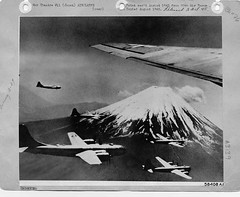The philistinism of antiphilistinism
Well, as the song said, that was the time, and that was the record of the time. People like me, coming out of the sixties, once dreamed of a fusion between something like pop music and something like conceptual art. We longed for an expressive form that would combine the urgency of a musical concert with the cool detachment of an art without illusions. We wished for an energy and imagination without pretension, for entertainment that did not pander and art that was not antagonistic to commercialism, merely indifferent to it. I suppose we hoped to strike such a balance in our own lives. Glimpses of what that sensibility might have been like were pretty rare. United States was one of them.I thought this was terrific, on a number of levels: Anderson is a pretty slippery talent, an artist who is greater than her works, and difficult to pin down critically [see my review of The End of the Moon]. Menand manages it by describing an audience that connects with her, a smart and useful insight, and sorts an era at the same time. (Of course, it so happens that he describes me pretty well, even though I’m a child of the eighties and not the sixties.) In his preface for American Studies (FSG, 2002)—from whence the Anderson essay springs—Menand writes that “[a]ppearance, mystique, aura, reputation: these are all aspects of the things that interest us, and they are as real as anything else.”
In the next few days I picked my way through the anthology, especially taking to three essays: “The Popist: Pauline Kael,” [a version is available here] “Norman Mailer in His Time,” and “Life in the Stone Age” (the latter an examination of Jann Wenner and the history of Rolling Stone). Menand’s feel for middle-class (and, hence, American) culture is extraordinary, and after reading (and rereading) these essays, I’m beginning to understand why everyone claims to hate TV so. To start with the Kael essay, Menand observes that the New Yorker was established as a magazine that hewed to a kind of anticommercial commercialism, one squarely aimed at the well-educated and affluent middle class, a population that “did not need to be told who Proust and Freud and Stravinsky were, but they were glad, at the same time, not to be expected to know anything terribly specific about them.” In short, the “New Yorker made it possible to feel that being an antisophisticate was the mark of true sophistication, and that any culture worth having could be had without special aesthetic equipment or intellectual gymnastics.” (This is not the case today—and although this is an accurate description of a certain brand of arriviste, it is but a short hop to a sclerotic vanity rooted in non-highbrow culture.) Menand cites Kael as a crucial bridge to popularizing cinema in this same vein, by disarming the fear of too high and the fear of too low. And so the germ of the high-low problem is identified: entertainment for educated people, (say) Sgt. Pepper’s Lonely Hearts Club Band.
Which leads us to the Rolling Stone piece, with more on the knotty problem of popular entertainment, plus a smart examination of the counterculture-as-commercial-culture (not to mention a economical thumbnail of the seventies and an encomium for Hunter Thompson); Menand continues to sort the middle class in his piece on Mailer with observations of the relations of liberals to technology, and then dons his lit crit hat to argue, for all of Mailer’s faults, that his “creation” of Gary Gilmore’s girlfriend in The Executioner’s Song (1979) is a singular achievement.
Menand is sometimes criticized for thoroughly contextualizing his ideas, so much so that there is little room for independent thought. This was certainly not my experience: I can't get readings from American Studies out of my mind.
Postscript: Menand is a kind of anti-Paglia (and there are things about Paglia that I admire), an admirer of the sixties who keeps the era at arm's length. A cool eye, indeed.
































































